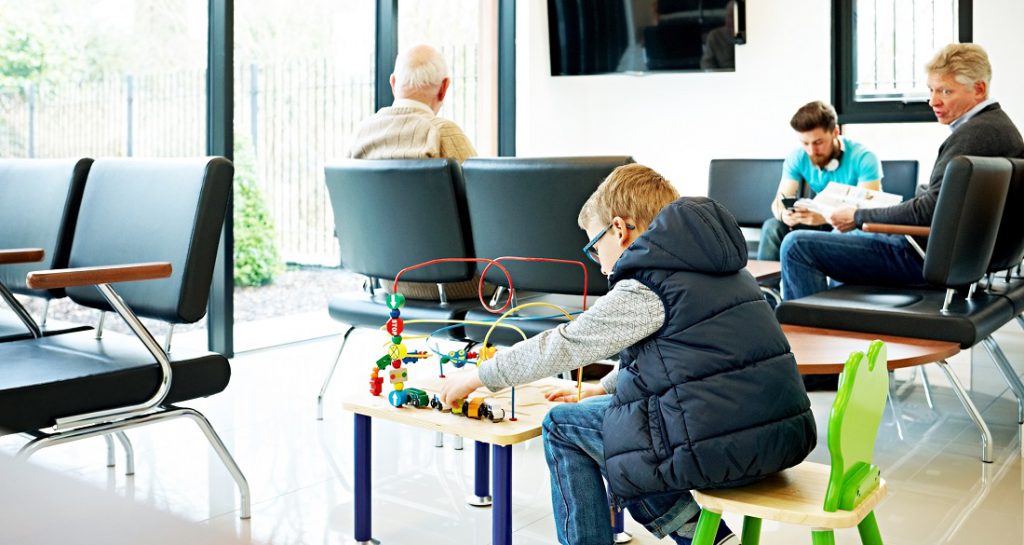Diaper rash, chicken pox, eczema — there are lot of childhood health concerns on every parent’s radar. Skin cancer may not top the list of things parents worry about, but those with a family history of the disease may wonder about their child’s risk. Here’s what you need to know about childhood skin cancer, and when it’s time to take your child to a dermatologist.
Childhood Skin Cancer: Uncommon, But Not Impossible
While skin cancer is the most common cancer in the world, very few cases develop in children. “It’s less common than in adults,” says Anne Marie McNeill, MD, a board-certified dermatologist practicing in Newport Beach, California. “But it can and does occur. There are only about 300 new cases per year in our country, but the incidence is increasing.”
Dr. McNeill points out that melanoma, one of the most dangerous forms of skin cancer, is the second most common cancer in people aged 15 to 29, and that children are at a higher risk for melanoma than other skin cancers. Risk factors for childhood melanoma include genetic predisposition and family history, so melanoma-prone families should take special care. Each person with a first-degree relative diagnosed with melanoma has a 50 percent greater chance of developing the disease than people who do not have a family history of the disease.
Additional risk factors include fair skin and a high level of ultraviolet (UV) radiation exposure — specifically, intense sun exposure early in life (the kind a child might get on a family vacation to the tropics). It’s important to keep in mind that this exposure, especially if it causes a blistering sunburn in a young child, is a risk factor for melanoma later in life. So, even if your son or daughter doesn’t develop skin cancer during childhood, the damage done during those early years may take a toll.
When to Worry About Your Child’s Moles
Dermatologists generally advise that when adults develop new moles they should have them examined for signs of skin cancer. But while Dr. McNeill says that she would biopsy a new mole that popped up on an adult, she pointed out that moles behave differently in children.
“Some children are born with moles, and others develop them within two years of birth. These are called congenital nevi,” Dr. McNeill says. “Others develop them even later on. It’s very common to acquire new moles during childhood. This is normal.”
If any of your child’s moles meet ABCDE criteria or stand out when compared with other moles (an Ugly Duckling), that would merit a visit to the dermatologist. Dr. McNeill also suggests scheduling an appointment for some spots that don’t exhibit the classic signs of melanoma. “Parents should watch out for other odd-looking moles, like pink, warty or nodular-appearing growths,” she says. “Childhood skin cancer often presents differently than adult tumors.”
Learning Protective Habits
The best way to prevent childhood skin cancer (and skin cancer later in life) is to practice a complete sun protection regimen. “Parents can teach shade-seeking, sun-protective clothing and sunscreen habits starting in infancy, and the importance of self-exams when children start dressing themselves,” says Dr. McNeill. “In addition, it is crucial to avoid tanning salons during the teenage years.”
The risk of developing skin cancer as a minor is slim, but the UV damage you get during the childhood years is a significant risk factor for the disease to develop during adulthood. Dr. McNeill says taking action early can help reduce this risk. By teaching your children good sun protection habits, you can help set them up for a life of healthy skin.
Related Content:
- When a Child Gets Skin Cancer
- Basal Cell Carcinoma at Age 16 – Teen Warns: “Skin Cancer Can Happen to Anybody”
- Getting Pregnant After a Melanoma Diagnosis: What You Need to Know
- Coping with Advanced Melanoma During Pregnancy
- Ask the Expert: Does Being Pregnant Increase Your Melanoma Risk?





